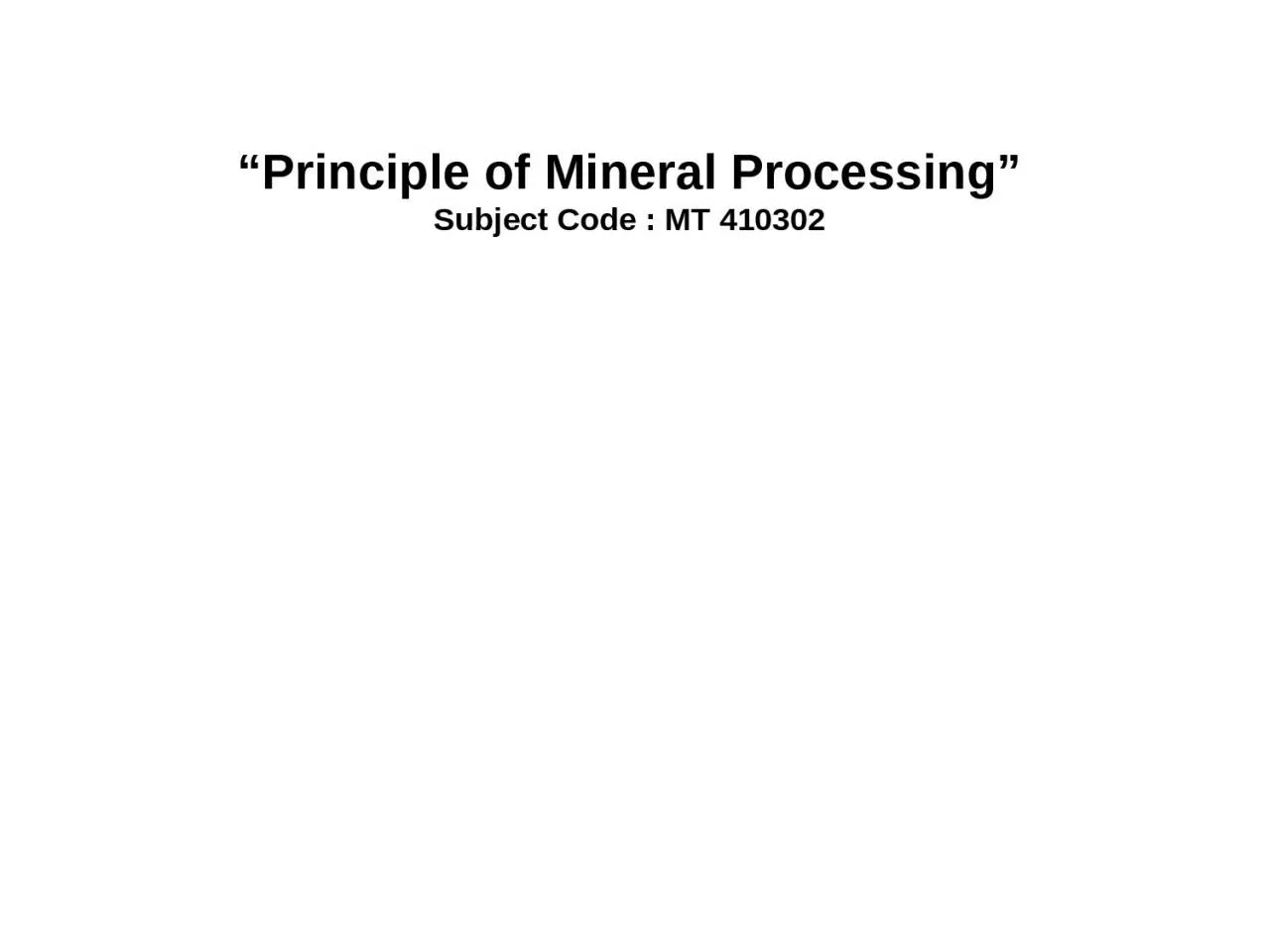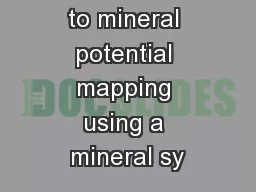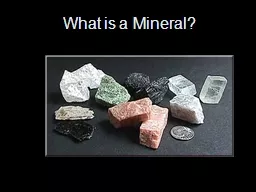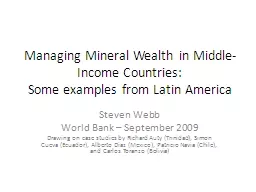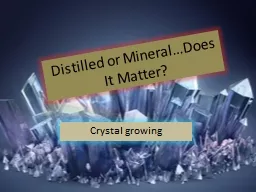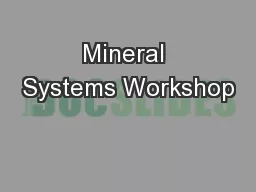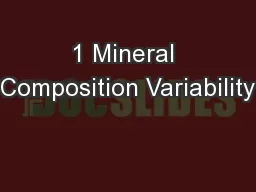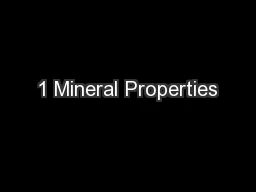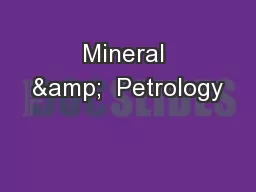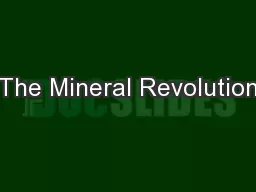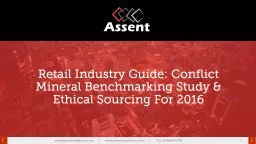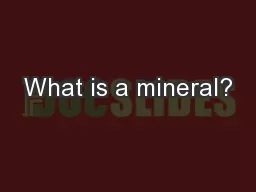PPT-“Principle of Mineral Processing”
Author : reagan | Published Date : 2023-09-25
Subject Code MT 410302 Unit 1 Introduction and scope of mineral processing in extractive metallurgy Mineral resources in India Physical characteristics exploited
Presentation Embed Code
Download Presentation
Download Presentation The PPT/PDF document "“Principle of Mineral Processing”" is the property of its rightful owner. Permission is granted to download and print the materials on this website for personal, non-commercial use only, and to display it on your personal computer provided you do not modify the materials and that you retain all copyright notices contained in the materials. By downloading content from our website, you accept the terms of this agreement.
“Principle of Mineral Processing”: Transcript
Download Rules Of Document
"“Principle of Mineral Processing”"The content belongs to its owner. You may download and print it for personal use, without modification, and keep all copyright notices. By downloading, you agree to these terms.
Related Documents

